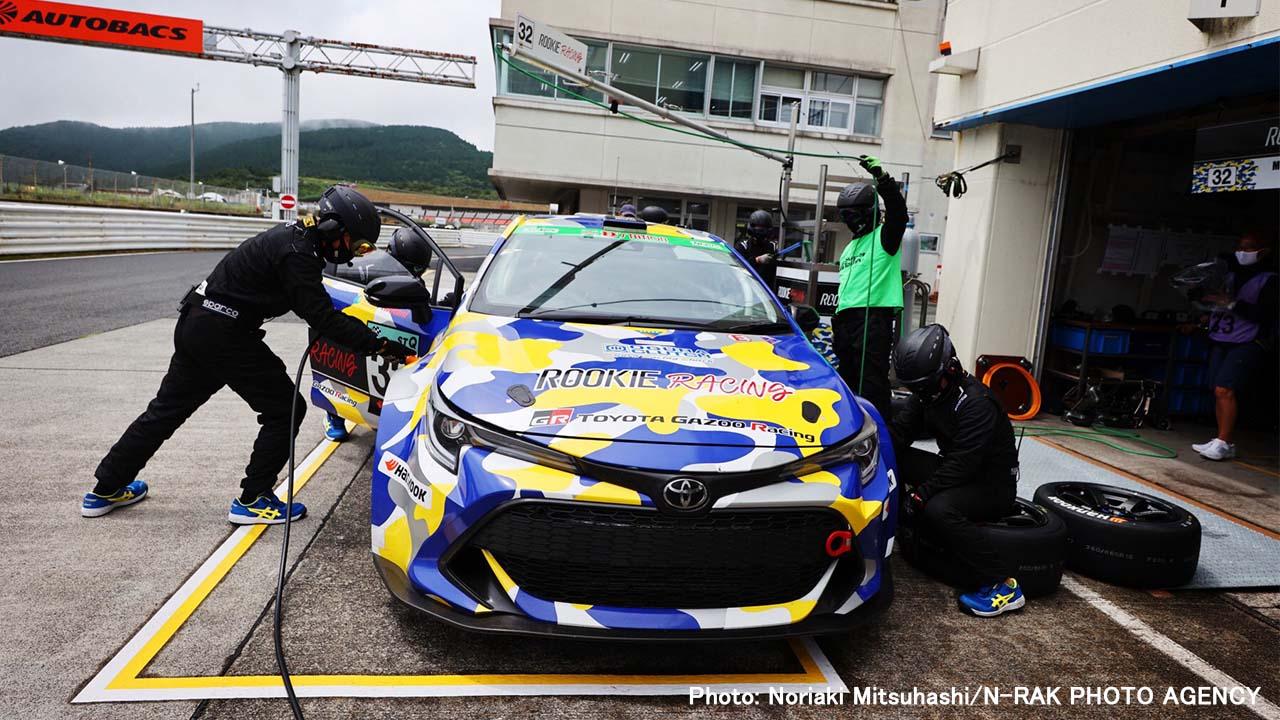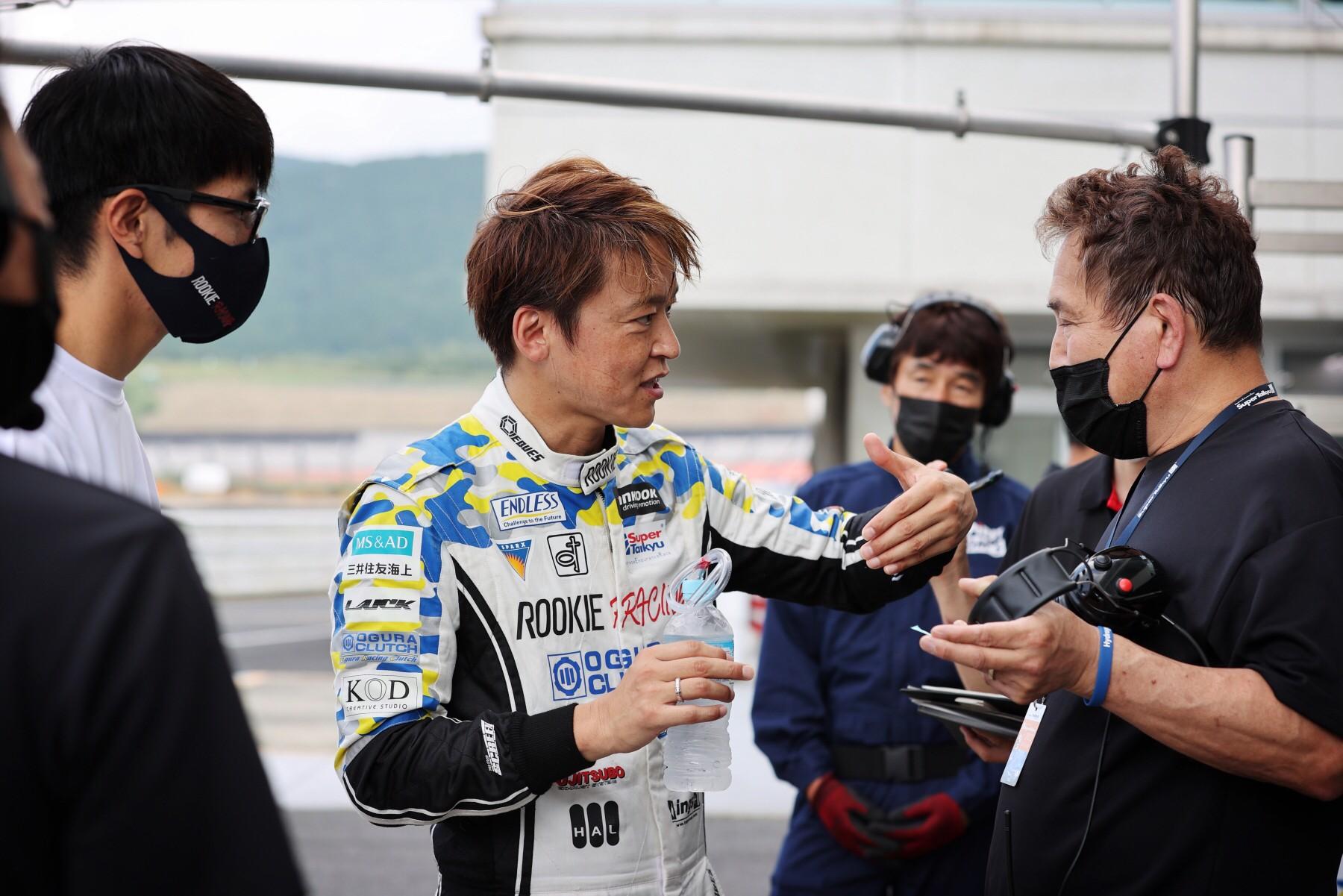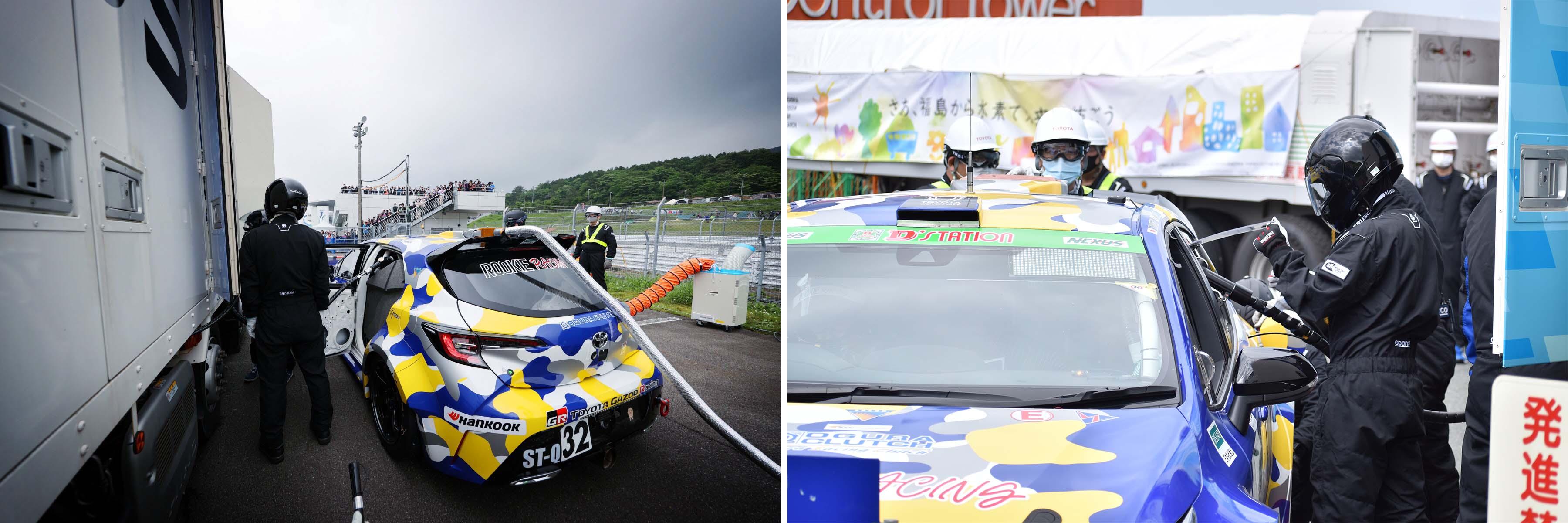
Years of improvement, akin to a full model change for production cars, in just two months - take a closer look at the hydrogen-powered Corolla's dramatic improvement.

The hydrogen-powered Corolla Sport took on the fourth round of the 2021 Super Taikyu Series at Autopolis in Oita prefecture. Following on from the previous article that focuses on locally produced energy, this time Toyota Times shines the spotlight on agile development* in motorsports.
*A development method featuring rapid cycles of implementation and testing, enabling flexible responses to changes in specifications and requirements that arise in the process. Generally used in systems and software development.
This time, ROOKIE Racing’s hydrogen-powered Corolla completed the five-hour race without trouble. At a press conference the day before the race, GAZOO Racing Company President Koji Sato outlined the improvements that had been made in the two months since the previous outing.
President Sato
The specs of this engine are completely different from the car we raced at Fuji Speedway. We were able to substantially* boost both output and torque. For example, it now has about 9 percent better acceleration on straights.
*Press release notes torque improvement of around 15 percentOn top of that, we’ve made the car lighter. Including gauges, we’ve cut about 40kg, and I believe this has brought corresponding improvements in drivability.
At the same time, we’ve worked with the FIA (Federation Internationale de l'Automobile) to examine how far we can increase the flow of hydrogen into the car in order to cut down refueling times, which were considerable in the last race. Including structural improvements to the vehicle, the result is around 40 percent faster refueling.

Although a straightforward comparison is not possible, in terms of weight reduction, for example, the hybrid Yaris shed 50kg from its predecessor, but this model change took three years.
In this case, it took just two months from the last race. Besides weight reduction, all of the other stats are in line with or better than a conventional full model change in production cars, which usually happens once in a few years.
Such is the extremely bold, rapid change of the hydrogen-powered Corolla. The nature of this evolution becomes clear through the comments of President Sato, along with the engineers and drivers involved in its development.
More power and torque to outrun rivals
“Going by our times from the practice sessions earlier, I would put (the hydrogen-powered Corolla) above the ST-5 class (displacements of 1,500 cc or below) but not quite reaching ST-4 (displacements of 1,501 cc-2,000 cc). This means we should certainly see you passing other vehicles, right?”
At the press conference held the day before the main race, President Sato hinted of his expectations when addressing the ROOKIE Racing drivers.
“Last time we had a good battle with the ST-5 class Roadster,” replied driver Masahiro Sasaki, “but I can really feel the boost in engine power this time.” To which an astonished Takuto Iguchi added, “At Fuji, we were racing with one eye on the speeds and lap times of the lowest class, but this time we have our sights on the top. It's amazing that the technology can be brought so far in around two months.”


So what exactly did the team do? President Sato explained the efforts made since the last race.
President Sato
Last time, partly because we wanted to do whatever it took to complete the 24 hours, our setup hedged against the risk of abnormal combustion. But since then, we’ve made progress in analyzing combustion, and the output has gone up.
More than altering the hardware, we improved our controls.
Also, the base is a GR Yaris engine, which has great features, including being able to withstand high-speed combustion, so we took the step of trimming the margins to bring out the engine’s innate power.
Despite this, according to GR Powertrain Development Division Manager Daichi Yamazaki, “trimming the margins” did not mean sacrificing durability.
Daichi Yamazaki
This engine is still fit to take on a 24-hour race. We didn’t cut its lifespan, rather we worked on removing the buffer that was in place to prevent abnormal combustion.
We raise the hydrogen’s pressure to increase the injection volume, but in the last race we didn't really know how far we could push it.
Since then, we’ve learned a lot about how hydrogen flows in (to the cylinders), how it mixes, and where abnormal combustion occurs, which showed us that we still have room to spare.
Having rapidly improved performance since last time, the team also has its sights on the next opportunity.
Daichi Yamazaki
At Fuji, the torque and output were around 80 percent that of a gasoline engine. This time we’re up to 90 percent, so we want to bring it up to level at the next race in Suzuka.
Then in the final round we’re eagerly hoping to surpass that. If we can get to that point, I believe people will see the potential.
“Drivability” helps drivers find their rhythm
During the press conference, Takamitsu Matsui offered a different perspective on the car than the other drivers, saying, “The car’s control and drivability are also greatly improved”. He also voiced his aspirations: “I too want to show that we can outrun others in the main race”.

What is “drivability”? President Sato explained from an engineer’s perspective.
President Sato
On a race track it is not only the maximum power or torque that matter, but also the transient response (up to that point). In that regard, the output and torque are better than last time.
When operating the gas pedal, you get the power out of the engine as you expect, which helps build rhythm.
Autopolis in particular has many ups and downs, so you’re frequently on and off the gas pedal. At Fuji, the engine didn’t really respond right away, but now it immediately gives you the power you need.
Because the car also had a high center of gravity, we had to set the suspension accordingly, but after reducing the weight and adjusting the center of gravity during rolling, it now moves as intended when you turn the wheel.
I think all of these improvements now enable the car to move just as the drivers intend.
According to Naoyuki Sakamoto, chief engineer in charge of the vehicle’s development at the GR Project Development Division, the team also made various improvements based on driver feedback that the cabin was too cramped, the seating position was awkward, and the mirrors were hard to see.
Matsui’s comments, which seemed to reflect his true feelings, indicate that he keenly sensed these changes in the car.
Steady efforts pay off in reducing weight and refueling time
Another of the car’s concrete improvements is the reduction in weight by a full 40kg. Although the total weight marks a major improvement, this was achieved by steadily addressing smaller individual items.
President Sato
There was no silver bullet. We did it by cutting 1-2kg at a time, but the biggest factor was the measuring instruments.
At Fuji we loaded the car with various items to get all sorts of data, but the lead time for this race meant that we could make them more compact, cutting some 5-6kg.
We also reduced the weight of the car body itself. We wanted to lighten the front end, so we greatly revised the structure of the suspension members (parts that form the suspension framework), shedding about 5kg. Aside from that, it was a combination of small reductions.
Another improvement unique to the hydrogen-powered car was a 40 percent reduction in refueling time, from five minutes to three. This too was the result of smaller changes.
President Sato
There is no magic to refueling hydrogen – it is determined by the pressure-temperature relationship.
(In a race) the tank temperature is not allowed to exceed 80℃, so we control the inflow rate to prevent that from happening.
For this race, where the track involves a lot of full-throttle acceleration and fuel temperature is quite low, we had the data to prove that we would not exceed the upper limit. Consulting with the FIA, we were able to increase the speed of the flow.
Also, whereas in the last race the door had to be opened when refueling, this time it is done through a small window. Even in areas other than refueling speed, we were able to make individual reductions with TPS perspectives in mind.

Hydrogen’s challenges and possibilities come to light through doing
With all these examples of agile technology development in motorsports, “there are many things that come to light by doing first, rather than planning it out in your head”, says President Sato.
President Sato
For example, the mobile hydrogen stations work on a power supply voltage of 400V, which is not exactly found everywhere. That’s industrial voltage, so in reality the mobile station is semi-stationary. These are the sorts of things you learn by doing. I think it’s important to take on the challenge.
Similarly, in the push towards carbon neutrality, much emphasis is placed on using CO2-free green hydrogen derived from renewable energy, but Sato insists this shouldn’t be a primary concern.
President Sato
Rather than worrying about green, blue, or grey, I think we need to start by making hydrogen usable.
Even blue hydrogen is beneficial if it can help reduce CO2 emissions. If we rule out using it simply because it’s blue, the development of emissions-reducing technology will not progress.
The important thing is improving the supply environment, including energy infrastructure and production. To that end, even if it means using blue hydrogen, I think we should develop technical solutions with purpose and passion.
I believe we should broadly pursue the potential of hydrogen to make it a more accessible source of energy.
The challenge with the hydrogen-powered engine is developing technology in an uncharted area. Countless hurdles still remain. Nonetheless, taking that first step reveals the problems that need solving, and repeating that cycle drives evolution.
By racing in a hydrogen-powered car, President Akio Toyoda is calling for “action to expand our options for achieving carbon neutrality.”
By expanding not only powertrain options but also the types of renewable energy and hydrogen, these efforts may prove to be a catalyst in spurring new future alternatives.

